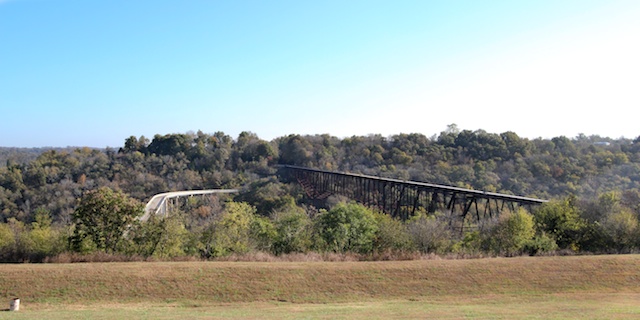Kentucky Summary
I'm on the plane heading back via Chicago right now, going through the excess photos I've taken and thinking about some of the lessons I've learned and interesting tidbits I didn't get to fit into the series of posts this week. I am definitely leaving Kentucky with a very positive feeling concerning the producers we visited and their passion about whiskey-making. It is ultimately their fervor for fine Bourbon that inspires me, so I'm certainly recharged and motivated concerning my own.

There are distillers in Kentucky who would rather make no Bourbon than mediocre Bourbon, even with the recent upswing in demand. In order to keep the supply chain satiated, many distilleries have added on extra shifts and are distilling every day without a rest period. It wasn't always this way for producers back in the day, especially during the summer months when many distilleries would shut down. Now that Wild Turkey has expanded into a newer, higher-volume facility, they can return to their old schedule, taking the summer months off to shut down the site. The reason behind this is the temperature. Jimmy Russell, like many before him, doesn't think that the distillate produced during warmer months is as good as the spirit produced during the Fall, Winter, and Spring. According to Russell, the fermentation times get all messed up and the resulting beer doesn't taste the way that it should. I'm not sure if Campari is too fond of this policy, but are you really going to tell Jimmy Russell how to make his whiskey?

Another interesting fact concerning Bourbon production is the location of the distilleries. Water is one of the most important facets of spirits distillation and you're going to need a quality well if you're going to make quality whiskey. Back in the day, before reverse osmosis was the norm and all water could be treated with ease, having the purest source of well water made a big difference in the quality of each Bourbon. Stitzel-Weller was known for having a fine well to draw from, which was part of the reason it was built out in Shively. The other had to do with taxes. Certain remote locations were free from restrictions and were easier to manage. This is currently the case with Adelphi's new distillery in Scotland, which is being built out the middle of nowhere for that same reason.

If you head out into the middle of nowhere, you can definitely find a number of old, non-operational distilleries from Kentucky's past, particularly if you see warehouses. Many ancient sites have been left completely as they were, while utilizing the rickhouse space without touching the still house. Heaven Hill purchased the old Glencoe distillery (in which David OG's grandfather once owned a share) for storage, but if you stumble out towards the back of the driveway the older facilities are still there. Being from the Bay Area, you don't see a lot of property just left unused like you do in Kentucky. It's really quite fascinating to know that these places still exist despite the fact they haven't been used in decades.

We hit up our share of liquor stores across the state to see if we would find anything interesting, but we didn't come up with anything crazy. I bought a pint of Very Old Barton 6 year 100 proof since we can't get that in California (only Ridgemont Reserve for us) and I really enjoyed it. It's a pretty good little whiskey, especially for the $8 it cost me. I snagged a 750ml as well for the suitcase. Another Sazerac whiskey we don't get is Ancient Age, so I ordered a glass of the AAA 10 year in downtown Louisville at dinner one night. When I went to find a bottle, however, all I ran across was one last 1.75L plastic jug at a remote Liquor Barn express. I asked if they had any 750ml bottles and they said the product was actually being discontinued. Other stores said they hadn't been able to order for months. That would follow suit with what we heard from the folks at Buffalo Trace. There's just not enough.

The joke of the trip between us boys was definitely the Hot Brown. While we stayed at the Brown Hotel in Louisville for the first two nights, we failed to order what is perhaps the most famous local dish in Kentucky from the place known for making it best. Brian ended up getting Hot Browned (an open-faced turkey sandwich covered in cheese sauce) at Kurtz's in Bardstown. That was the last one any of us ate, but we definitely asked every person we met where we could get the best Hot Brown. That, of course, spiraled quickly into juvenile jokes about toilets. I still have the sense of humor of a six year old boy, so I was in tears most of the time.

Looking out at the bridge over the Kentucky river from Wild Turkey distillery, and into the forests beyond it, I was deeply moved by the beauty of the countryside in Bourbon country. There's definitely a feeling that gets into your bones when you there. It makes you want to watch horse races, and drink Bourbon, and eat Hot Browns. It makes you want to breath in the autumnal air and visit every distillery you can. Today there are Bourbons being made in Colorado, Massachussets, and even Texas, but there's something special about Kentucky. I'm not sure I've figured out exactly what it is yet, but I'm closer than where I was before. I guess it's probably just tradition, right? A heritage of which its people are proud and honored to be carrying on.
-David Driscoll
